| japanese I english |
Michael Toenges, "VERONICA - Studies on Art History"may 11 - june 15, 2013 taguchi fine art, tokyo |
|
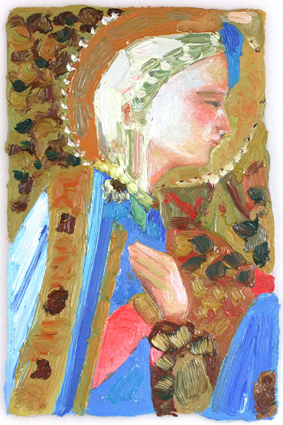
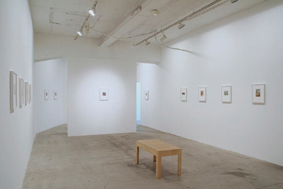
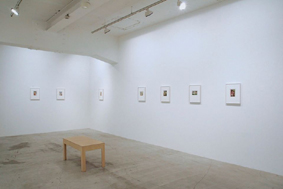
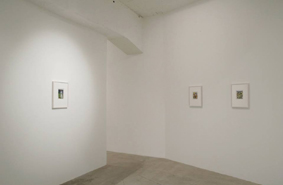
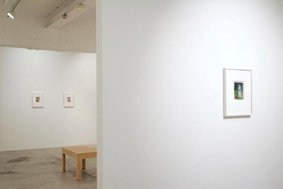
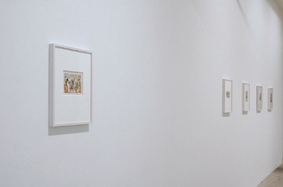
|
Born in Pfaffenhofen an der Ilm, Germany in 1952, Michael Toenges now resides in Cologne and works in Leverkusen. After graduating the School for Design and Fine Arts in Krefeld, he studied as a guest student in Fritz Schwegler class at Art Academy in Duesseldorf from 1980 until 1981. He had exhibitions in Germany, Switzerland, Belgium, Netherland and the United States. His works are in the collection of Kolumba Kunstmuseum in Cologne and Kunsthaus Aarau in Switzerland. @@@@ His abstract paintings full of gorgeous colors, exhibited at his one-person show last year at taguchi fine art, were very well appreciated by Japanese audience. This time installed are his studies coming out from his research on classical and modern master paintings that Toenges is occasionally making in order to create his own oil paintings. Works by European master painters from early Renaissance period through Baroque period are mostly religious paintings. When we see one of them, we are inclined to be caught by its subject and theme, trying to find which scene it is or what kind of characters are painted in the painting. In the academic field, iconographical research has been very actively developed but it does not seem that issues of which colors these master painters used or how they constructed their paintings with those colors have been well studied until today. On the other hand, if being in a position of a painter, we can easily imagine that those great masters cannot necessarily have constructed their paintings only in accordance with the convention on the iconography. For instance, Virgin Mary and Gabriel must exist in the scene of Annunciation and it is entrusted to the discretion of the painter whether there are other characters also in the scene. It is very possible for a painter to paint a character with clothes in certain color only because he wants that color in certain position in the painting. Toenges puts a sheet of tracing paper on a color plate in a monograph, traces the contour with a pencil and places the oil paint of the same color as the original, trying to experience as his own, how the great master dealt colors. Through this study, he researches great mastersŐ way of deciding the proportion and arrangement of colors in their paintings. Now Toenges has plenty of knowledge about color that art historians rarely noticed, as "only this painter used this color". Joseph Marioni, the painter, - he often talks about his paintings in a way, that he is using the legend of the holy Veronica. Vera - this means in Latin "True". And Eikon means in old Greek language "Image". It is the question, what is a true image. Can an image be true? How can we be sure, that it is true - in the moment we say "Image". A true image means, that the material (oil color) is transformed to something, which is " more" than material. If it remains only to the material it is nothing for me, makes no sense. It is maybe a nice piece of design, but if it does not reach our heart, it is not true for me. Color is the fastest way to our heart says Jerry Zeniuk. I would say, in the moment, when color in my painting appears, it is just like a flash in the darkest Night. Flaming up and burning down. For a very short moment color is Real, true and clear. It is the Moment, when you in the "ZEN" Meditation have seen, what there is behind the curtain of reality. The small studies are for me something just like my meditation ! This is the reason for making paintings. Not to have a nice picture of something. This is good and fine. But if I do not reach from time to time this short moment, when color is flashing through my heart, I feel hungry. And in the moment, when it is there, I feel the sadness of a moment, which never comes back. So I try since more than 30 years to go this way of color. Often I go wrong. But sometimes I stay and do discover the Real icon ! My Veronica ! March, 2013 Michael Toenges The studies (from Giotto to Cezanne) on view this time are essentially works for himself and preparatory works for his oil paintings. Therefore Toenges has not willingly exhibited them so far. However, they are very charming and so eloquent. They are telling us that the arrangement and composition of colors in his oil paintings are created not by his own sense or instant idea and that his paintings are extension of the long history of European painting. checklist of the installation 1. Study on "Baptism of Christ" by Piero della Francesca 2011, oil and pencil on paper, 13.8 x 10.0 cm 2. Study on "Exaltation of the Cross: Heraclius enters Jerusalem with the Cross" by Piero della Francesca 2011, oil and pencil on paper, 13.8 x 10.0 cm 3. Study on "Coronation of the Virgin" by Fra Angelico 2008, oil and pencil on paper, 14.0 x 9.0 cm 4. Study on "Presentation in the temple" by Giotto di Bondone 2010, oil and pencil on paper, 10.5 x 13.5 cm 5. Study on "The Return of Judith to Bethulia" by Sandro Botticelli 2007, oil and pencil on paper, 13.4 x 10.3 cm 6. Study on "The Birth of Venus" by Sandro Botticelli 2007, oil and pencil on paper, 8.5 x 13.0 cm 7. Study on "Portrait of a Cardinal" by El Greco 2007, oil and pencil on paper, 13.5 x 9.0 cm 8. Study on "The Annunciation" by Fra Angelico 2008, oil and pencil on paper, 10.4 x 11.0 cm 9. Study on "The Clothed Maja" by Francisco Goya 2007, oil and pencil on paper, 6.3 x 13.0 cm 10. Study on "Descent from the Cross" by Peter Paul Rubens 2008, oil and pencil on paper, 13.3 x 10.5 cm 11. Study on "The Mont Sainte-Victoire" by Paul Cezanne 2012, oil and pencil on paper, 10.0 x 12.3 cm 12. Study on "Still Life with Onions and Bottle" by Paul Cezanne 2012, oil and pencil on paper, 15.0 x 10.0 cm 13. Study on "Child with a Dove" by Pablo Picasso 2007, oil and pencil on paper, 14.0 x 10.0 cm 14. Study on "The Three Comrades" by Fernand Leger 2009, oil and pencil on paper, 13.0 x 10.3 cm 15. Study on "La Foret" by Fernand Leger 2009, oil and pencil on paper, 13.0 x 10.4 cm 16. Study on "Vase of Flowers" by Pablo Picasso 2007, oil and pencil on paper, 13.3 x 10.8 cm 17. Study on "The Purple Tablecloth" by Georges Braque 2008, oil and pencil on paper, 9.5 x 12.8 cm 18. Study on "Flight into Egypt" by Giotto di Bondone 2010, oil and pencil on paper, 13.4 x 9.8 cm 19. Study on "Coronation of the Virgin" by Fra Angelico 2008, oil and pencil on paper, 13.5 x 8.5 cm 20. Study on "Young man being introduced to the Seven Liberal Arts" by Sandro Botticelli 2007, oil and pencil on paper, 12.8 x 10.0 cm 21. Study on "Patience" by Georges Braque 2008, oil and pencil on paper, 13.3 x 10.4 cm |